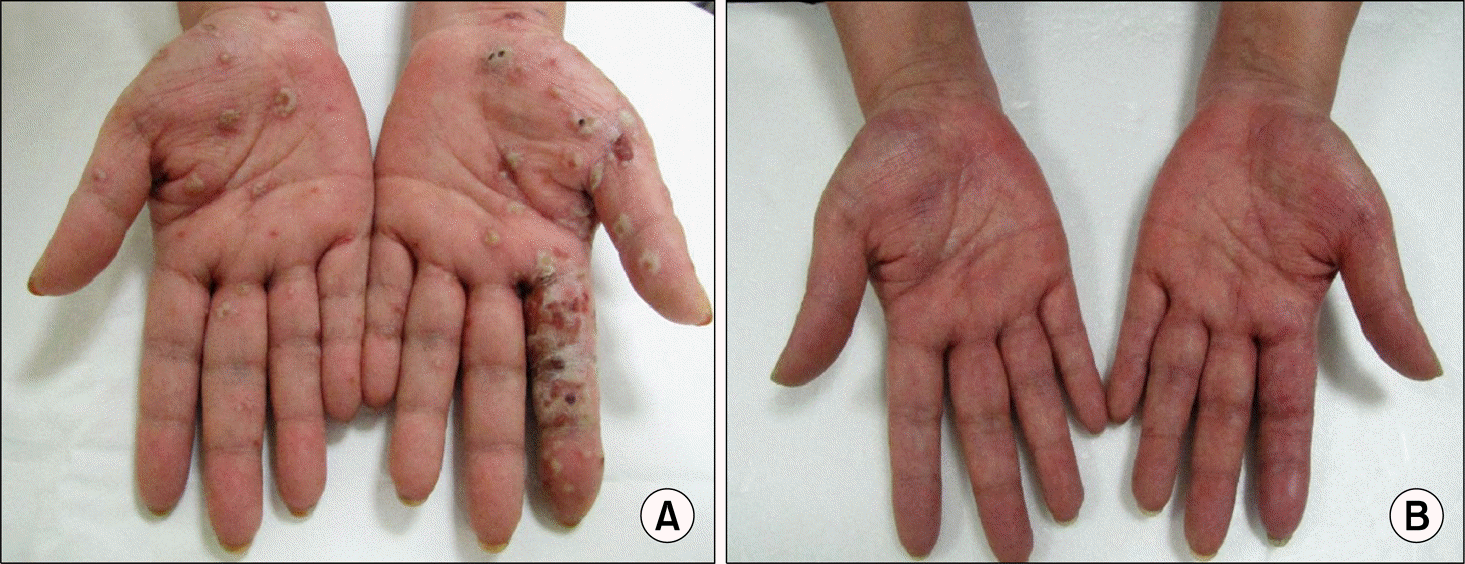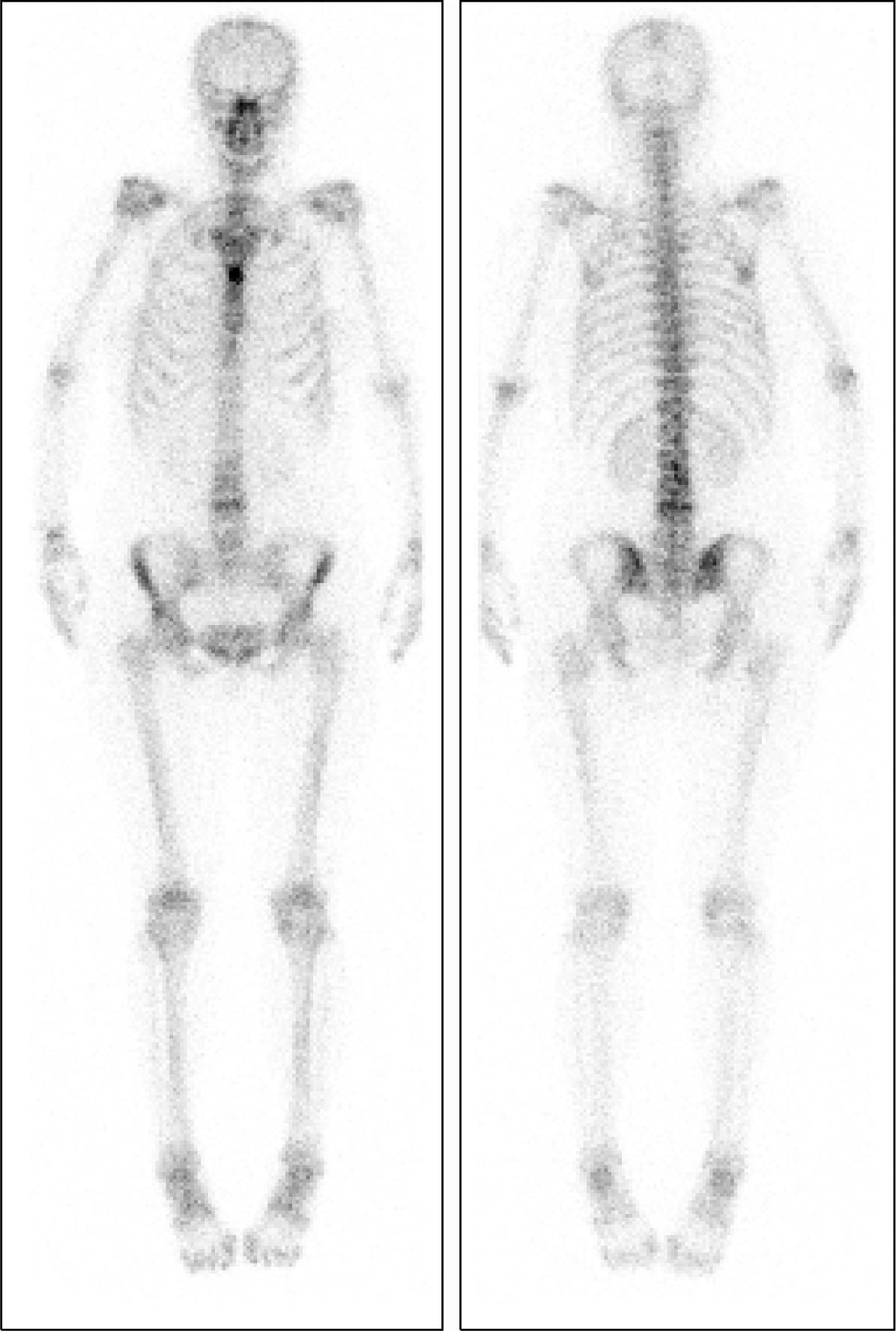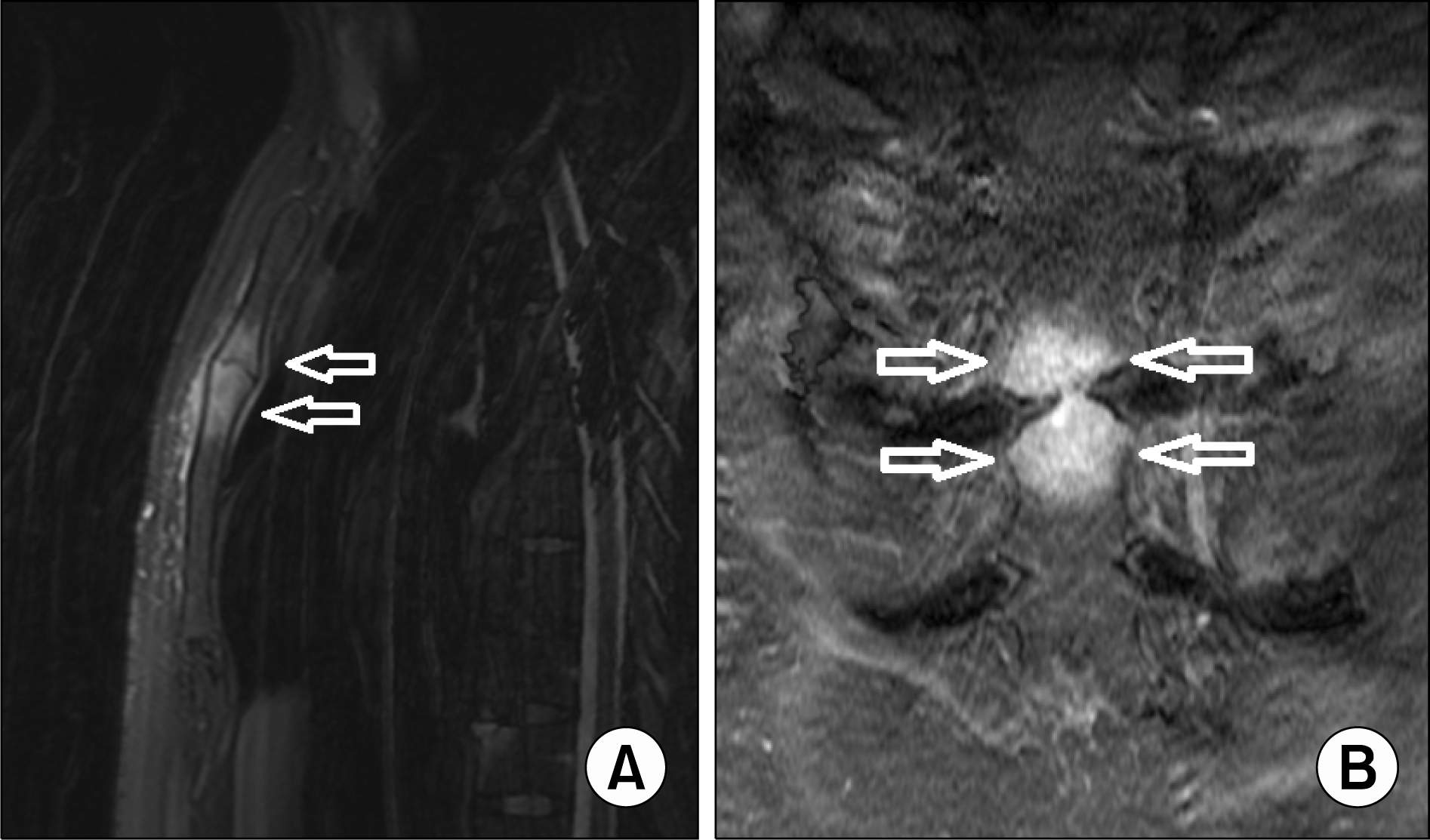Abstract
SAPHO syndrome, characterized by synovitis, acne, pustulosis, hyperostosis, and osteitis is rare compared to other spondyloarthropathies. It is also difficult to diagnose, and treatment methods have not yet been fully identified. Approximately 72% of patients are diagnosed with at least one other disease before a final diagnosis of SAPHO syndrome. In addition, SAPHO syndrome is subject to a delayed diagnosis period of 4.5 to 9.1 years. Medications such as non-steroidal anti-inflammatory drugs, disease-modifying anti-rheumatic drugs, and tumor necrosis factor inhibitors are used in treatment of SAPHO syndrome. Bisphosphonate is also used for refractory SAPHO syndrome; however, most reports on this relate to intravenous injection of medication. The authors experienced and subsequently reported on a case involving a patient with SAPHO syndrome accompanied by fracture and infection of the left second finger who was treated with the oral biphosphonate, alendronate.
REFERENCES
1. Witt M, Meier J, Hammitzsch A, Proft F, Schulze-Koops H, Grunke M. Disease burden, disease manifestations and current treatment regimen of the SAPHO syndrome in Germany: results from a nationwide patient survey. Semin Arthritis Rheum. 2014; 43:745–50.

2. Nguyen MT, Borchers A, Selmi C, Naguwa SM, Cheema G, Gershwin ME. The SAPHO syndrome. Semin Arthritis Rheum. 2012; 42:254–65.

3. Kramer SC, Thomas CJ, Tyler WB, Elston DM. Kaposi's varicelliform eruption: a case report and review of the literature. Cutis. 2004; 73:115–22.
4. Assmann G, Kueck O, Kirchhoff T, Rosenthal H, Voswinkel J, Pfreundschuh M, et al. Efficacy of antibiotic therapy for SAPHO syndrome is lost after its discontinuation: an inter-ventional study. Arthritis Res Ther. 2009; 11:R140.

5. Pennanen N, Lapinjoki S, Urtti A, Mönkkönen J. Effect of liposomal and free bisphosphonates on the IL-1 beta, IL-6 and TNF alpha secretion from RAW 264 cells in vitro. Pharm Res. 1995; 12:916–22.
6. Colina M, La Corte R, Trotta F. Sustained remission of SAPHO syndrome with pamidronate: a follow-up of fourteen cases and a review of the literature. Clin Exp Rheumatol. 2009; 27:112–5.
8. Amital H, Applbaum YH, Aamar S, Daniel N, Rubinow A. SAPHO syndrome treated with pamidronate: an open-label study of 10 patients. Rheumatology (Oxford). 2004; 43:658–61.

9. Fioravanti A, Cantarini L, Burroni L, Mazzei MA, Volterrani L, Galeazzi M. Efficacy of alendronate in the treatment of the SAPHO syndrome. J Clin Rheumatol. 2008; 14:183–4.

Figure 1.
Pustulosis in different size and shape were seen in her 2nd finger (A) and disappearance of pustule after treatment with 2 months of oral alendronate (B).

Figure 2.
Bone scan showed increased uptake on the bilateral sternoclavicular joint, manubriosternal junction, both inferior sacroiliac joint, both knees.

Figure 3.
Magnetic resonance imaging of sagittal (A) and coronal (B) fat suppressed T2 weighted image show bone marrow edema at manubriosternal junction (arrows).

Table 1.
Summary of reports of patients with SAPHO treated with oral alendronate




 PDF
PDF ePub
ePub Citation
Citation Print
Print


 XML Download
XML Download